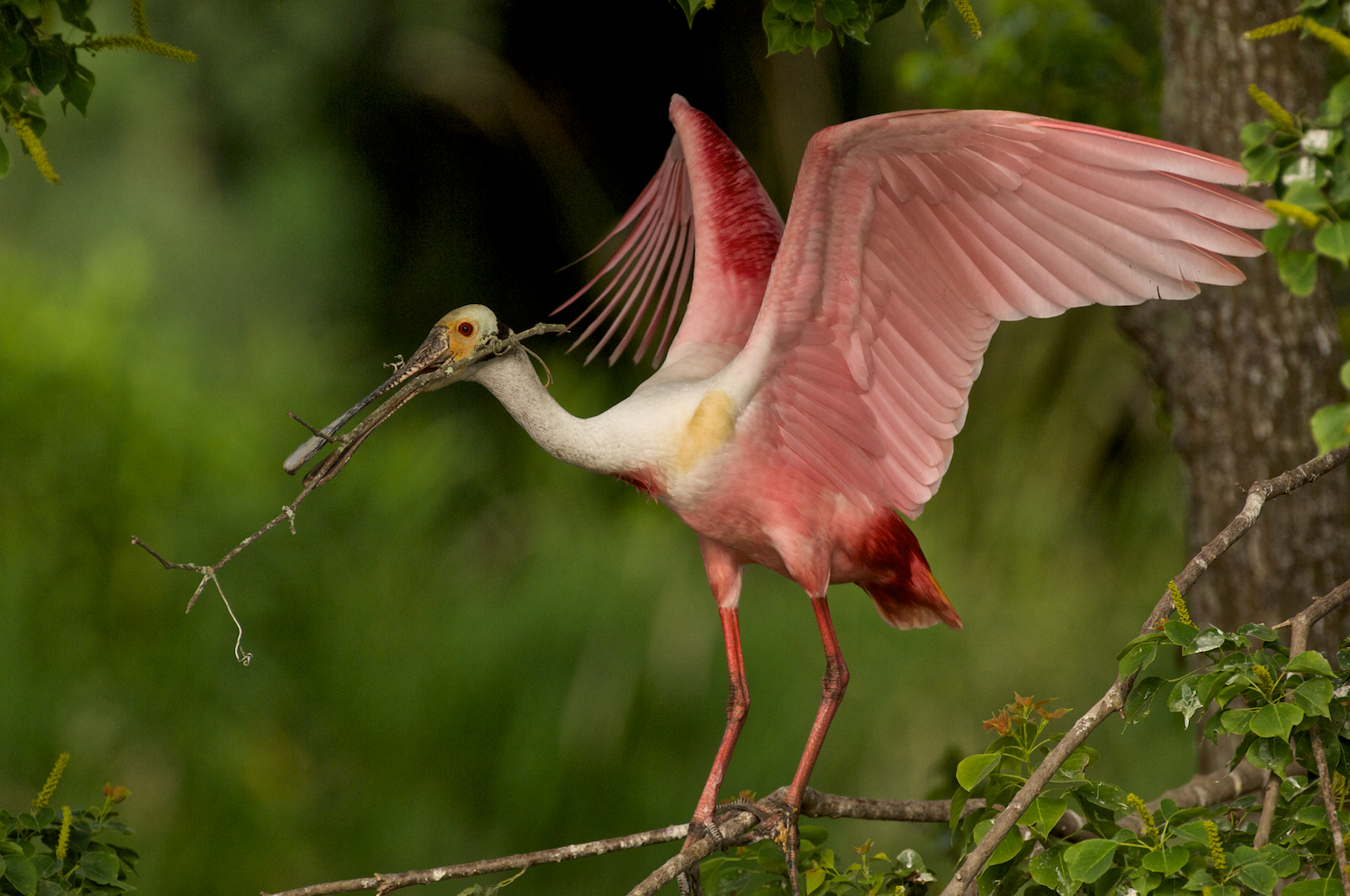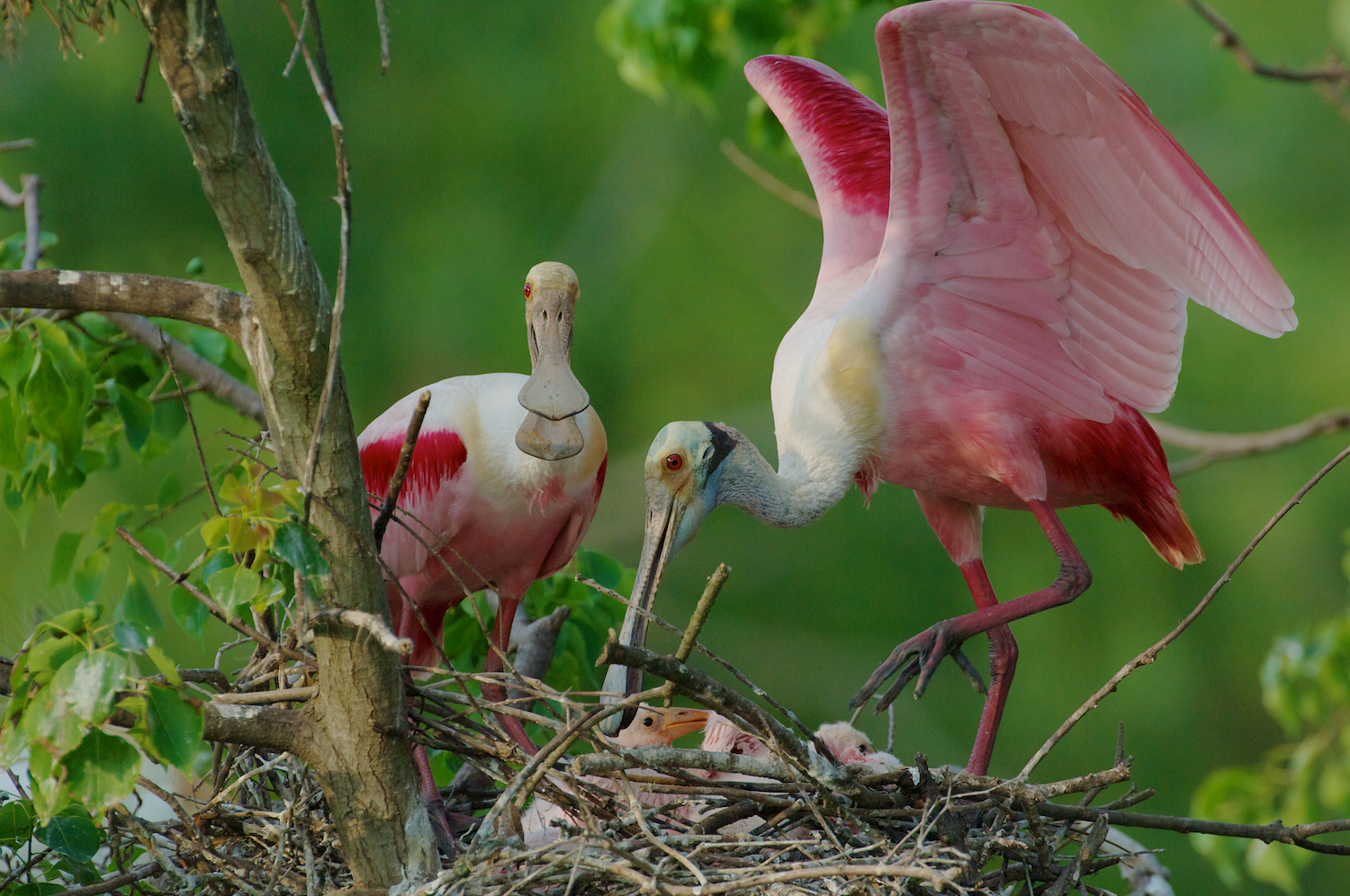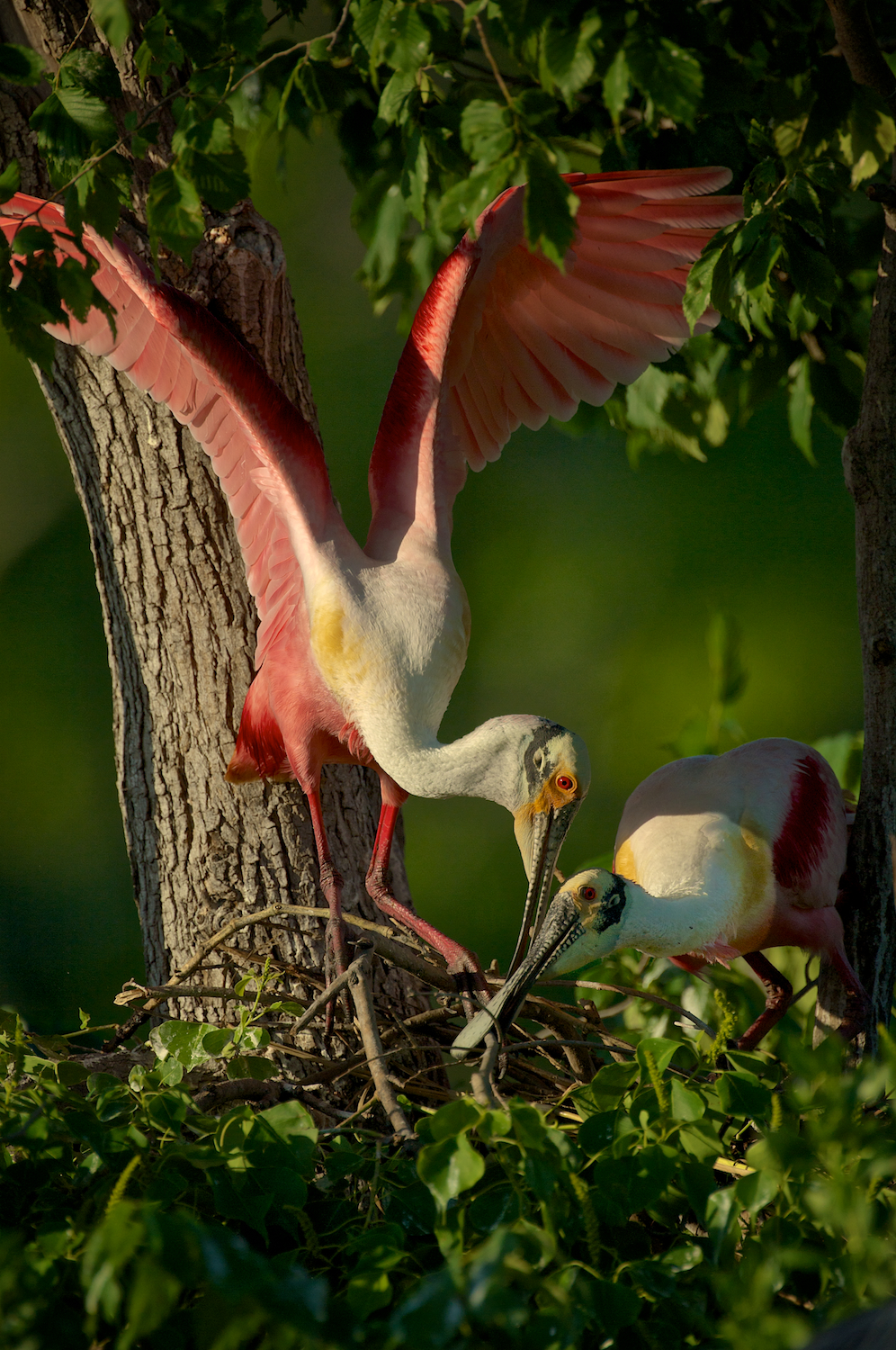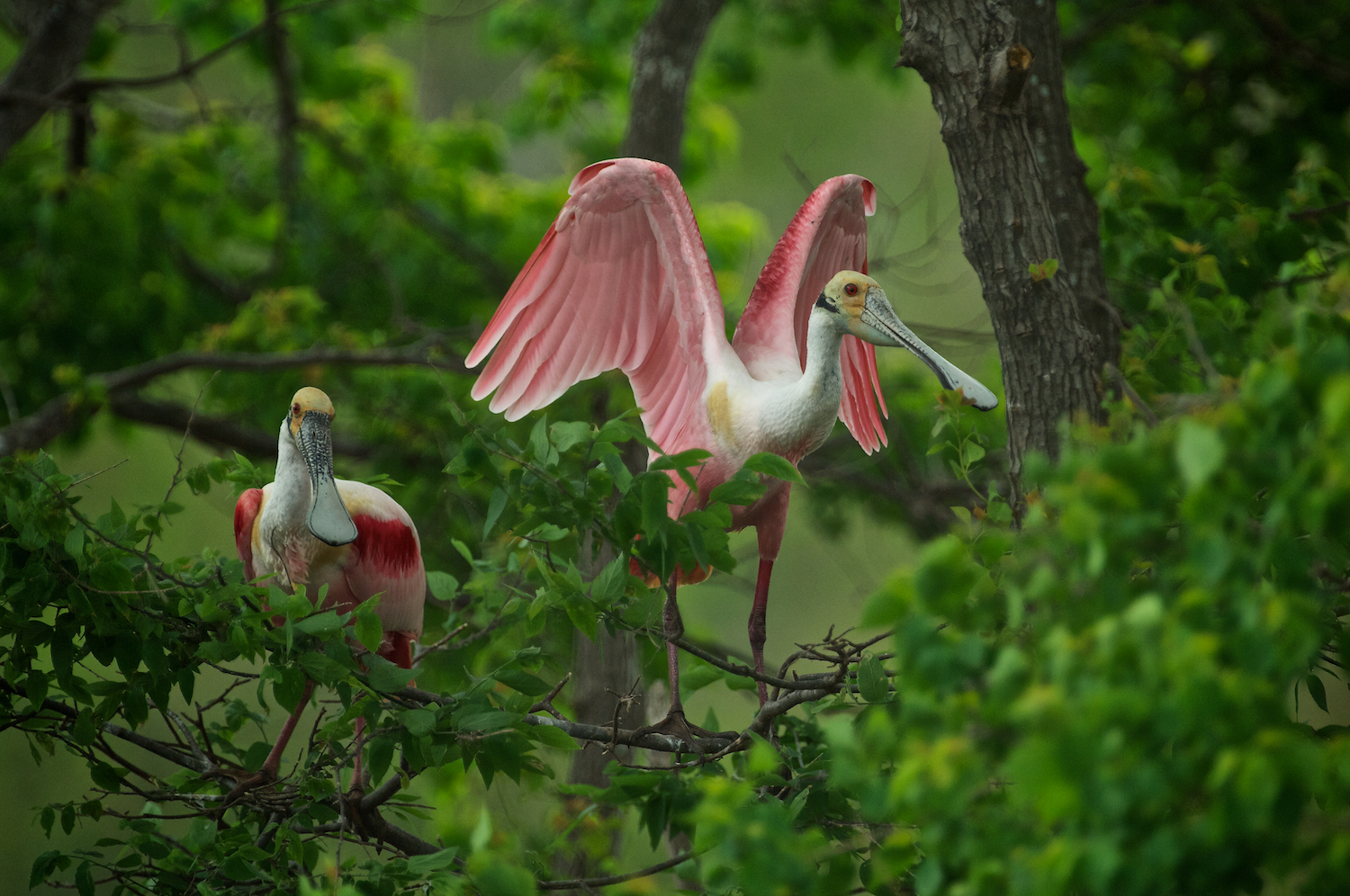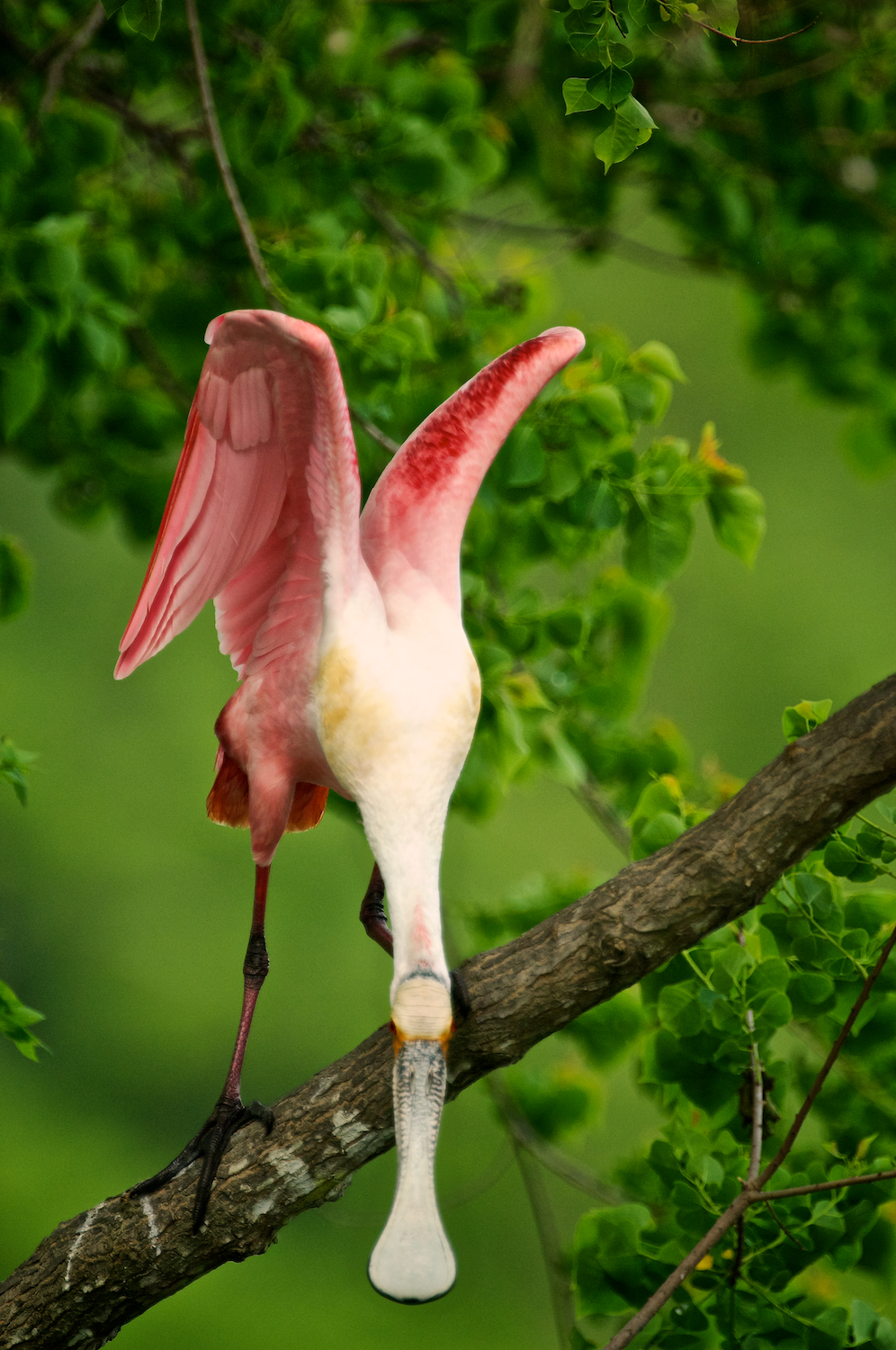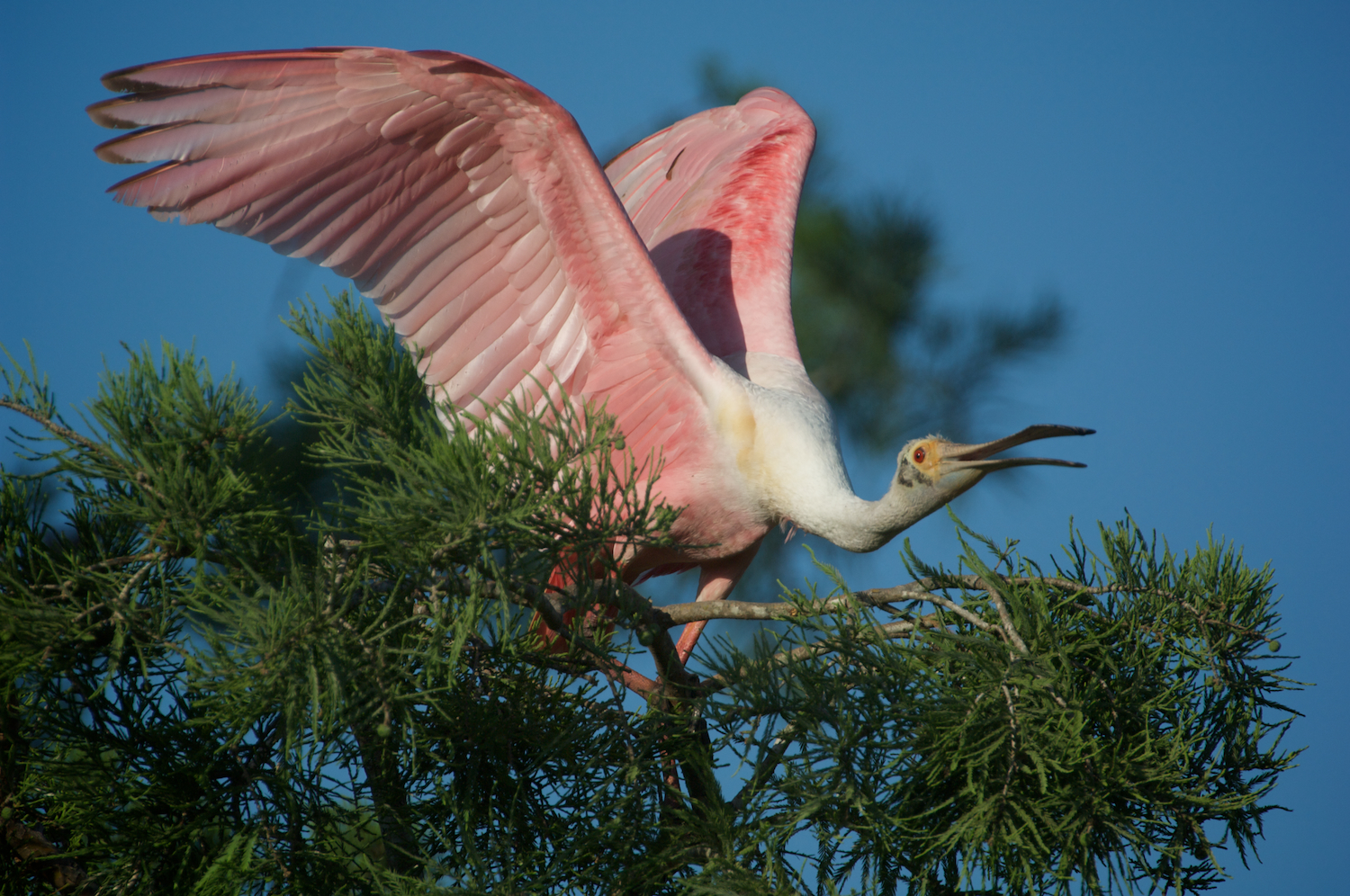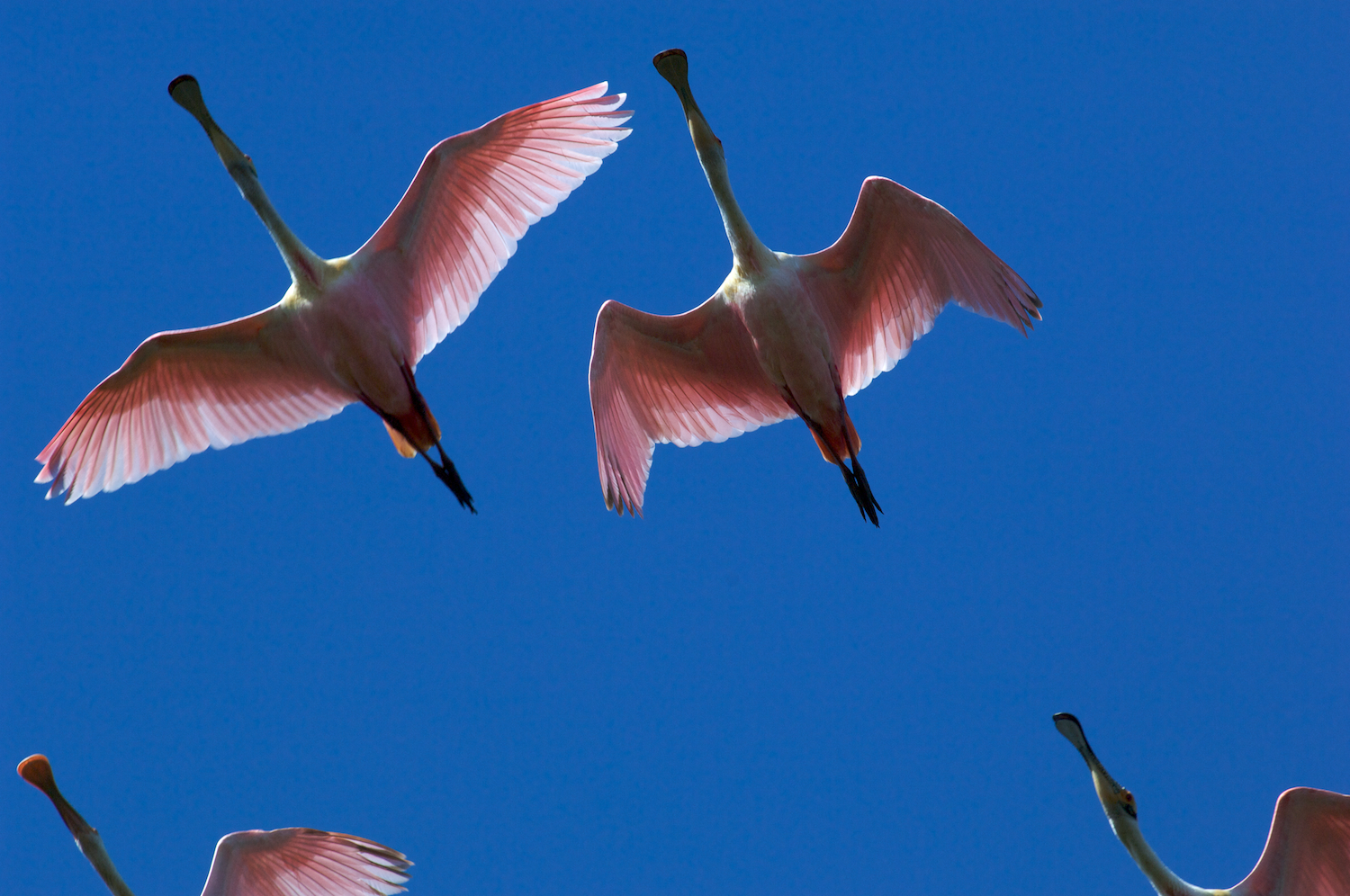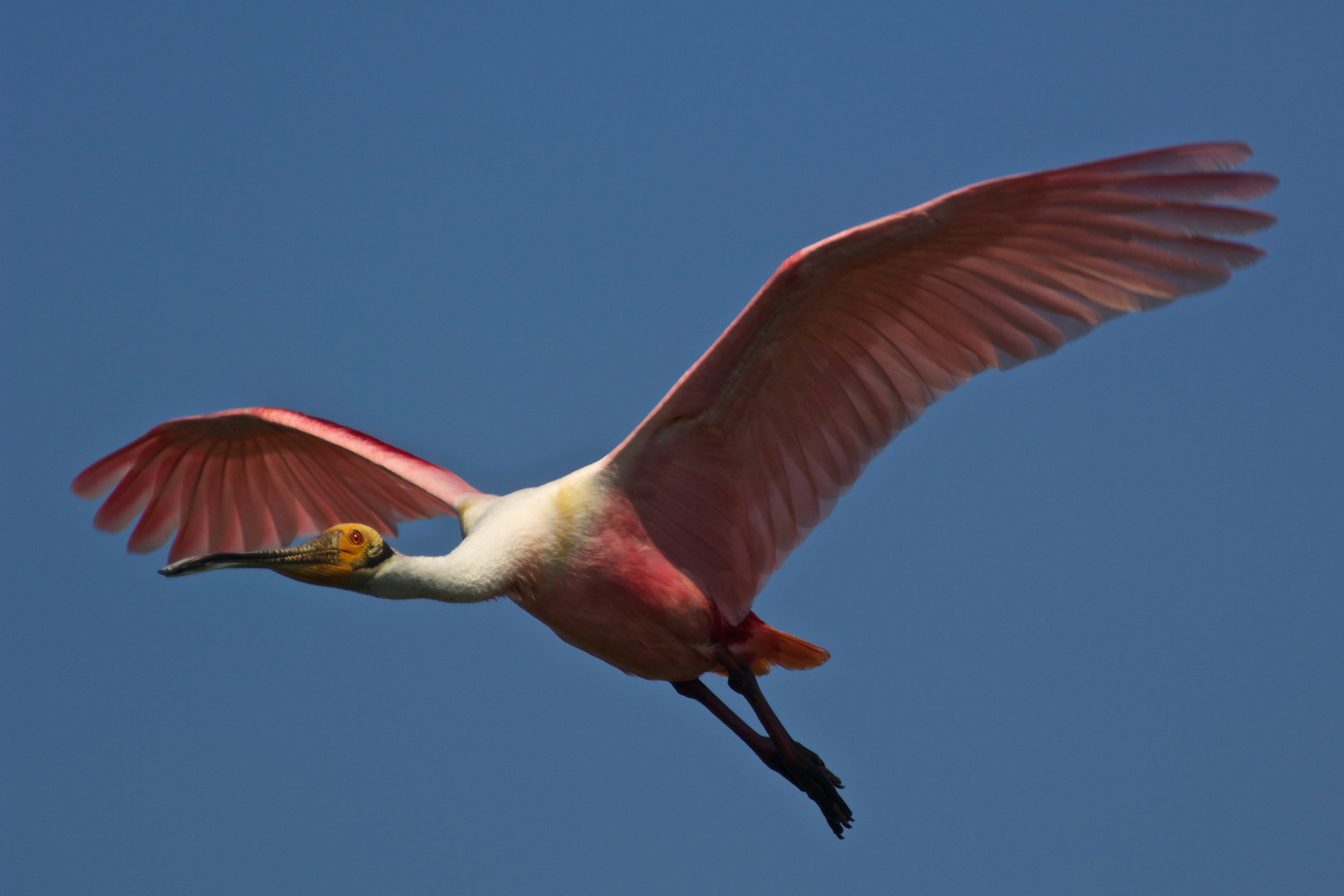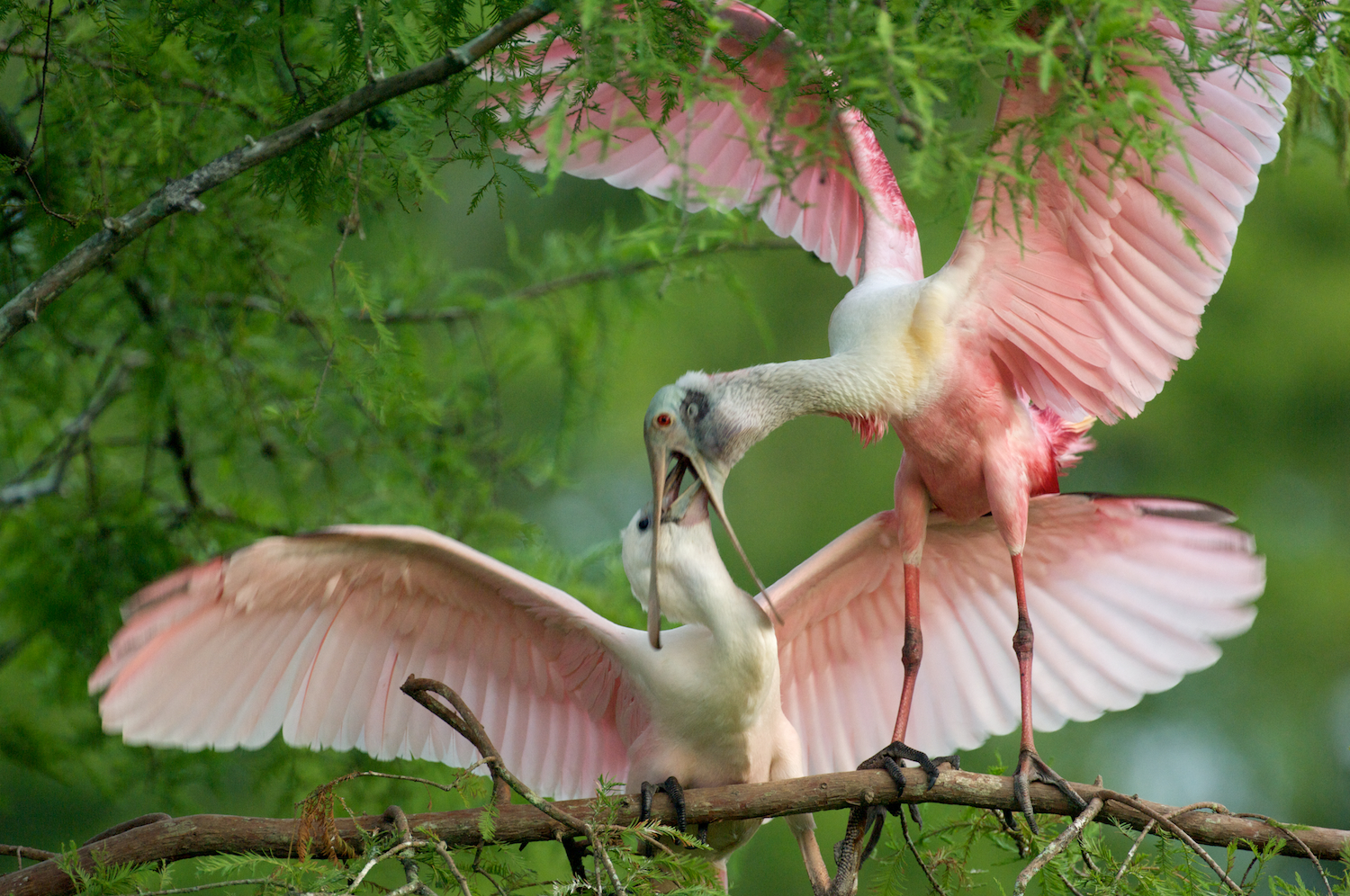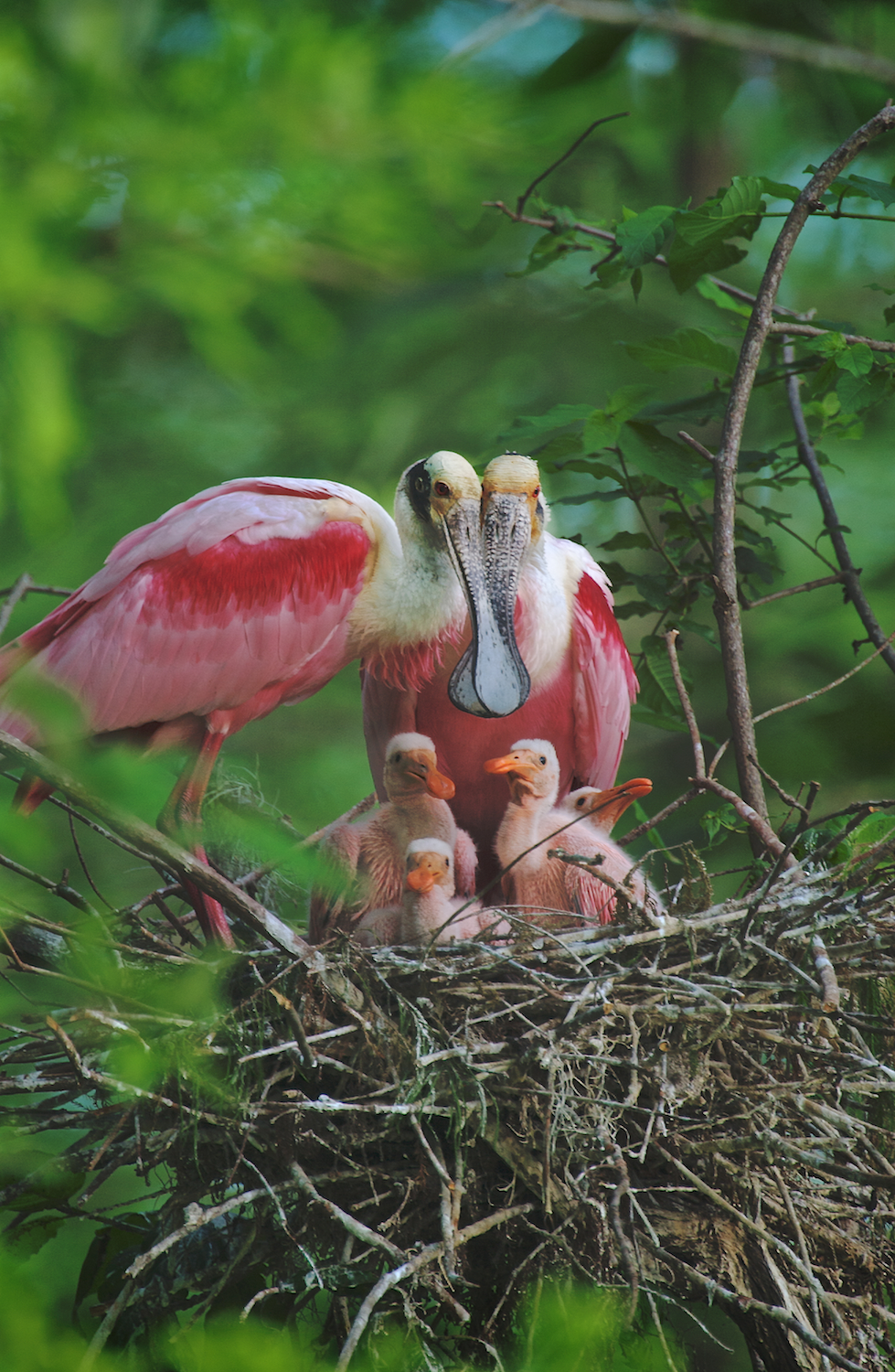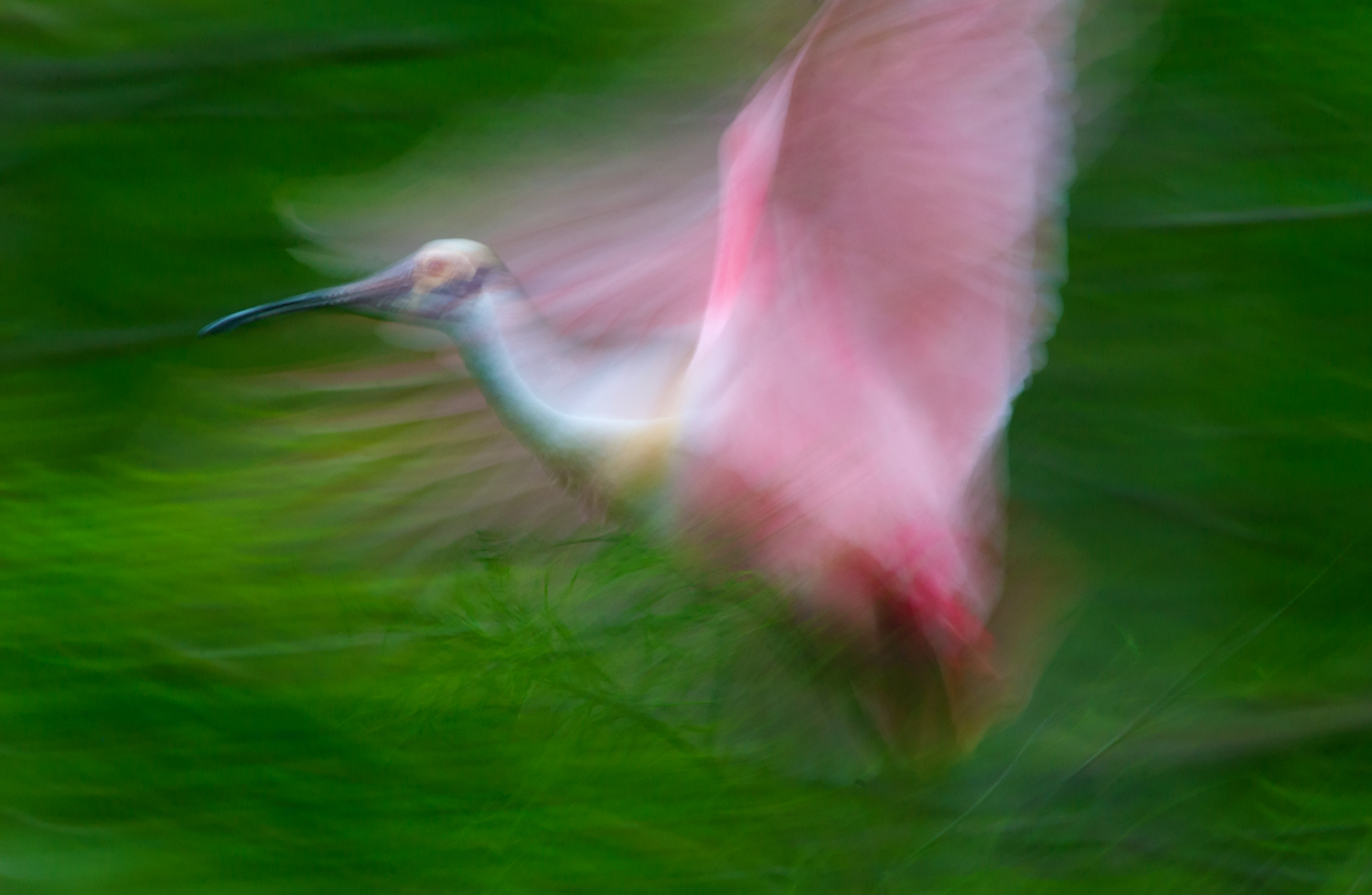Infrared Photography to Extend Shooting Window
I've been frustrated for some time about having a very short window of good light early and late in the day. The middle of the day has always been a challange. Fortunately there's one form of photography that is best in the middle of the day with bright light, Infrared (IR) photography.
Oak Tree–Lake Martin Visitor's Center
Infrared Photography (IR)
Why Infrared–Extending the shooting window
I've been frustrated for some time about having a very short window of good light early and late in the day. The middle of the day has always been a challange. Fortunately there's one form of photography that is best in the middle of the day with bright light, Infrared (IR) photography.
Basically IR is a lower frequency radiation than we can see (red is the lowest we see so it is a wavelengh longer than red). the image is brighter for those objects emitting the most of this longer wavelength radiation which tends to be things that are warmer. IR images often taken on a dreamy other worldly look.
How to Shoot IR
There are two primary methods of capturing IR images, using a filter over the lens of a normal camera, or having a camera converted to capture IR and not visable light. Our normal sensors have a filter over them to block most of the IR frequencies, so the filter doesn't work very well, involving very long shutter speeds, so for most of us that is not a good option.
I experimented with that many years ago with a Coolpix 950 2.1 megapixel camera, and while it did a good job of capturing IR images, it required a tripod and the resolution was very low so prints were not really pracitical.
Bayou Scene Taken with Coolpix 950
The most practical method is to have your camera converted by one of several companies specializing in this process. They remove the filter over your sensor and replace it with one that blocks visible light and passes the IR frequencies.
Camera Conversion
I got an older D800 camera converted by Kolarivision. There are several wavelength options from displaying only black and white images to allowing a bit of color through. The filter I chose was a 665nm filter which they call an enhanced color filter. With a bit of post processing, which I will discuss in a later post, you can achieve a look with dark blue sky and white leaves. I also got their AR coating which helps reduce hot spots visiable with many lenses. Kolarvision did a very good job with the conversion and turned the camera around very quickly.
Another well respected company doing conversions is life pixel. While I've never used them, I know several people who have who were very pleased.
There are people on the web who have converted their cameras themselves, I would recommend against attempting this as it is a complex process prone to errors and with the risk of trapping dust between the filter and the sensor.
Shooting with the converted camera
While shooting with the camera in color mode you see the image with a deep red tint. This tint with most cameras can be corrected with a custom white balance. Unfortunately it took a bit of effort to make that work with my D800. The image was out of range for the camera to make the white balance, but I was able to work around this by shooting a light blue card and then applying the maximum amount of correction in the white balance fine tuning control in the custom settings menu. Another option would be to set the camera to monocrome, shoot in raw and post process using the resulting color image.
Another consideration is that the focus point is different from visible light and while the conversion company makes a correction for this, not all focal lengths of lenses work the same. The best approach is to use live view to focus where both the contrast detect autofocus and manual focusing will give accurate results.
Next Steps
I'll discuss Post Processing in another post. Suffice to say it's a bit of effort to get good results.
Oak Jefferson Island
Verdict
I'm really glad I had the D800 converted and I'm pleased with the results that can be achieved. It does in fact extend the shooting window.
IR Pano–Houma, La
Buying Bird Photography Equipment on a Budget
Bird Photography on a Budget
The equipment for bird photography can be very expensive. Part of this is the nature of the business, photographing small moving objects requires long telephoto lenses and effective autofocus systems
Beginning bird photographers would be well served with a good cropped sensor camera body and 400 mm f/5.6 lens or a 300 mm f/4 lens with a 1.4x teleconverter. By applying several common sense strategies you can acquire such a system at a reduced cost.
White Ibis in Breeding Plumage Millers Lake - Taken with Nikon D2X and Nikkor 300 AFS F/4 with TC-14e Teleconverter
This article is an update to my 2015 article, with much of it duplicated here. The good news is that with the switch by major camera manufacturers to mirrorless cameras with new lens mounts, there are bargains available for excellent systems. It is now possible to purchase a good starter system for approximately $1500, about $500 less than five years ago when I wrote the original article. The camera bodies now have more resolution, a faster frame rate, and are lower in high iso noise.
The equipment for bird photography can be costly. Part of this is the nature of the business, photographing small moving objects requires long telephoto lenses and effective autofocus systems Beginning bird photographers would be well served with a good cropped sensor camera body and 400 mm f/5.6 lens or a 300 mm f/4 lens with a 1.4x teleconverter. By applying several common-sense strategies, you can acquire such a system at a reduced cost. For Nikon, currently available suitable camera bodies are the D7200 and the D500, for Canon, the similar camera bodies are the EOS 7D Mark II and the EOS 7D Mark III.
Strategies for Reducing Equipment Costs
There are several strategies for reducing the cost of such a system. These include:
1. Buying Refurbished Equipment
2. Buying Last Years Model
3. Buying Used
4. Buying Grey Market
5. RentingBuying Refurbished Equipment
The two major camera system manufacturers used in bird photography, Nikon and Canon, both offer equipment that has been returned and then repaired and resold as refurbished equipment. I frequently use this strategy, and the savings are significant. Often the testing performed on refurbished equipment exceeds that done on new, I've purchased many camera bodies refurbished and numerous refurbished lenses, and I've never had a problem. However, one downside to this strategy is the length of the warranty, typically 90 days rather than the one year for new equipment, in some cases, a camera store will supplement the warranty with one of their own, but I'm not sure how well this works. I make sure I do a thorough job of testing any equipment purchased in this way as soon as I receive it to reduce the risk of a problem.
I have purchased refurbished equipment from Nikon directly, B&H, and Cameta Camera (Currently offline, not sure of their status).
For example, right now, Nikon USA has a refurbished D7200 699.96 and a D7500 for the same price, I'd choose the D7200 even though it's an older camera because it only has one card slot. Older, Nikon manual focus lenses aren't supported, if those things aren't relevant to you, the D7500 may be better as it shoots 8 FPS versus 6, and it has an articulating screen. A new D7500 is going for $899.99 on the same site.
Buying Last Years Model
Both Nikon and Canon have recently released mirrorless cameras, with significantly higher prices, and they probably don't handle flying birds as well as the DSLR's. For now, if you're looking for a budget system, I'd go with one of the DSLR's
The newer Canon 100-400 is $1799 at B&H, and the Nikon 300mm f/4 pf is $1996.55. While these are indeed very lovely lenses, for the budget-conscious, the older lenses are a better choice.
Buying used
Frequently when new equipment is released, people sell their older models to finance the latest camera equipment. This behavior is certainly correct now with the Nikon and Canon Mirrorless systems and with many people moving to Sony or Olympus Mirrorless systems. Looking at sources like KEH camera and eBay, you'll notice used camera equipment prices are much lower now. For example, I saw a used D500 on eBay for $845, which sells new for $1496.95. However, on eBay, if something looks too good to be true, it probably is. Check the seller ratings carefully and stick to one that has a high rating and a large number of sales. Usually, you're better off going to someone like KEH or the used department of B&H.
Buying Grey Market
Another strategy is buying "imported" or "Grey Market" equipment. Stores often purchase equipment outside of the country at a lower cost and then sell them in the US for less. The downside of this is that Nikon and Canon in this country will not honor the warranty or even service the equipment. I'm cautious not to buy any expensive Grey Market products. However, for low maintenance items, for example, a teleconverter, I would undoubtedly consider Grey Market if the price were right.
Renting equipment
One strategy for a one time equipment need, such as for an assignment or to do a photo tour, is to rent the equipment. Several good rental companies rent appropriate equipment. Two I'm familiar with are:
Lens Rentals Borrow Lenses
One caution is to be sure that you either have insurance or purchase their protection in case something goes wrong.
Camera Company Deals
Nikon and Canon are also running many specials discounting older cameras they still have in stock. If you're interested in a specific model, be sure and check that the used or refurbished camera or lens is really your best deal.
Conclusion
You can put together a good beginner's bird photography system with roughly equivalent Canon and Nikon equipment now for approximately $1500, roughly $500 less than five years ago, and have a better system.
Preparing for a Photo Trip–Part 3
The third of the series from the old Web site. Final Preparations
Final Preparations
At one week prior to the trip, long range weather forecasts are available on the web. While long range forecasts may not be the most accurate, it's a good time to get a handle on what weather you'll be experiencing on your trip. I like to look at the predicted high and low temperatures and of course the chance for rain. Based upon this forecast I can decide on clothing that may be needed for the trip. If I'm going to be spending time on a boat, I factor in the wind chill factor planning on a wind chill factor of at least 10 degrees below the forecast low. So, for example if the forecast low is 50, I know I'll need a fairly heavy jacket to keep warm. If there is any chance of rain, I'll make sure I have my Poncho, if the there is a very low chance of rain, I'll bring a small plastic poncho or perhaps just rely on a large black trash bag. For really cold weather I'll make sure I have a parka and long underwear.
Depending upon the weather I may modify the equipment I plan on bringing. While I always carry large trash bags, if it looks like there'll be a lot of rain I may bring a protective cover for my long lens and make sure I have my waterproof case for shooting sessions. While my rain cover is a bit more difficult to set up than a plastic trash bag, for days with a lot of rain I do feel more comfortable with a rain hood. I will also carry a towel or two to put over the lens or carry on the boat to allow me to keep things as dry as possible.
I also will check tidal information or river stages where appropriate. For example one of the favorite shooting locations on my tours is Cow Island Lake. But the Atchafalaya river stage must be greater than 15 feet for us to be able to get over the weir at the entrance of the Lake. I can check the current stage and the predicted stage on this link. I will continue to track this to make sure I schedule the trip to insure I can do the shoot I plan.
Now is also the time to go through and double check your equipment and do a final cleaning prior to the trip. Using the equipment list you've developed, now is the time to pack everything for the trip. Make sure everything is properly padded and protected. I like to use small plastic bags for each camera body or lens to reduce the amount of dust and the potential for water. If I plan on shipping equipment to the shoot, now is the time to do that to make sure it arrives in time.
Finally it's good time to do a check on your travel arrangements, make sure the flight hasn't changed and the hotel has your reservation, etc.
Photographing the Roseate Spoonbill
I've moved this from my old Web site. While I've updated the images using a slide show rather than the original in-line images, the content remains the same.
I’ve updated this guide with new information about where to photograph these beautiful birds; see the update here.
Also, please consider joining us for a tour, which includes photographing these beautiful birds; check out my tours here.
Ever since I saw my first Roseate Spoonbills along the side of the highway many years ago, I’ve been completely mesmerized by the striking colors and prehistoric appearance of this large pink wading bird. Not knowing of the bird when I first saw it, my first impression was one of disbelief. That was over 35 years ago, but every time I see one, I’m completely amazed but what I see.
General Facts and Appearance
The Spoonbill is the most striking wading bird in North America. It has a pink body, with red on its wings, and an orangish patch on its tail. The bill is spatula shaped and is used to scoop up its food from the water. It's about 30 inches tall with about a 36" wing span. The reddish wing feathers are more prominent during mating in the spring.
Here in Louisiana, they mate in early spring, March or April, and have the chicks in May or June. They nest with other wading birds in Cypress Trees growing in the water. Each mating pair has 3 to 5 chicks. The chicks are much lighter in color, a pale pink.
During the 1900's the population was decimated with "plum-hunters". The feathers were used for such things as fans. Since they nest among other wading birds such as egrets, which were also hunted for their feathers, the population was also impacted due to the disturbance of their nesting area. Currently nesting populations are found along the coast in Texas, Louisiana, and Florida. In Louisiana the largest nesting populations are in the Southwestern part of the state, within about 100 miles of the Gulf coast.
Behavior
The birds are often seen walking in the water foraging for food with their spatula shaped bill. Unlike the herons, they walk in a crouched position and move their tail back and forth as they walk. When in flight, the hold their head straight out, flapping their wings relatively slowly.
The birds are very territorial, during nesting season male act aggressively to other males holding territorial fights and chasing other males from their nesting site.
Roseates are often found in flocks during and outside of the nesting period. When nesting they are observed leaving and returning in larege "Upflights" involving many birds.
Migratory Behavior
In Louisiana, Roseate Spoonbill's don't appear to migrate outside of the area. They do disperse from the nesting site, probably due to food supply issues, but are found in the general area throughout the year.
The best online reference I've found is at:
Cornell Universities Birds of North America Online
Places to photographe Roseate Spoonbills in Louisiana
Lake Martin
Prior to 2006 Lake Martin, near Lafayette Louisiana, was without a doubt the premier location to photograph Roseate Spoonbils. Every spring, hundreds of pairs of Spoonbills nested in the Bald Cypress trees growing from with the waters of the Lake. Many of the nests were clearly visible from the gravel road on the East side of the Lake. The nesting area extended almost a mile from the south side of the Lake. This made mornings in the Spring at Lake Martin an exceptional place.
I returned to Louisiana in late 2001 and visited Lake Martin for the first time in March of 2002. It was an unforgettable experience seeing the hundreds of these beautiful birds sparring for their place to nest. During 2002 and 2003, I made the 2 hour trip to Lake Martin 2 or 3 times per week in the Spring. Many of my best photographs of the Spoonbills were made during this period.
Unfortunately early in the nesting season of 2006 a series of unfortunate events led to the near collapse of nesting at Lake Martin. The few remaining birds were nesting within the interior of the Lake far from human view and camera range. My take on this unfortunate event is found elsewhere on this site. While there has been a steady increase in the nesting population each year, as of the writing of this article in the winter of 2011, the birds have not returned to the area near the road that led to such wonderful photo opportunities. Hopefully over time Lake Martin will be restored to its' former status. Until then photographing Roseate Spoonbills there is only a pleasant memory.
(Update Late 2015, 2015 saw the fewest Roseates at Lake Martin since the 2006 event. Unfortunately I believe hope for a return of the previous glory of the Rookery is not to be expected.)
Rip Van Winkle Gardens - Jefferson Island
In 2007 I found a very nice Roseate Spoonbill Rookery near New Iberia, Louisiana. On the grounds of a Commercial Nursery many pairs of Roseate Spoonbills can be found nesting on artificial islands in Cypress trees. The islands were created for the express purpose of attracting a Rookery during the 1980's and it took until 2005 or 2006 for this to occur. Being on private property it requires permission to photograph there, but upon obtaining the permission it is a very nice and accessible place to photograph the birds. On advantage over Lake Martin is that there shooting opportunities both morning and afternoon. This location currently provides the best opportunity to photograph the birds. The way the location is laid out, it is a very natural setting with nice foliage and opportunities to create pleasing out of focus natural backgrounds. Not only are their opportunities to photograph nesting birds, it is well laid out for photographing the birds in flight.
Talons Landing Road – Klondyke, Louisiana
In Southwestern Louisiana, there is a small Rookery with Roseate Spoonbills. While there aren't as many birds as the Rookery at Jefferson Island, There are a there have been a dozen or so nesting Roseate Spoonbills for the past 4 years. While the site is on private property, shooting is from a gravel road to the West of the Rookery. The birds are about 70 feet from the road allowing excellent afternoon photo opportunities. During 2005, the site was badly effected by hurricane rita and there were no birds at the site in 2006. The birds returned in 2007 and have been there every year since.
(Update Late 2015, While the birds were nesting there in 2015, the grass along side the road has now almost completely obscured the trees, good photography at that site was not possible in 2014 or 2015)
Millers Lake
There is a very large wading bird Rookery at Millers Lake near Ville Platte, Louisiana. While the site has largely Ibis, Egrets, and Herons, there is also a small population of Roseate Spoonbills. While I love photographing at the Lake, access is by boat only and during dry years, only with a "mud boat". Unfortunately the Spoonbills nest in trees that are inaccessible by boat. While I've made some nice flight photographs of Roseate's there, it is not one of my preferred locations.
Other
As you move further west in the state there are other Roseate Spoonbill Rockeries I am aware of by have rarely photographed at. Sabine National Wildlife Refuge, badly damaged by several hurricanes, is a well known place for the bird. In 2006 when the Rookeries at Lake Martin and Klondyke had failed there was a small Rookery at Lacassine National Wildlife Refuge accessible by boat, the only place I could locate for that year. Interestingly, that was the only year the birds were there.
Photographic Challenges and Techniques
Wading bird Rookeries are challenging places to photograph.
The closest you're going to get to nesting birds is 75 to 150 feet. In order to photograph birds of this size at that range you're going to need at least a 500 mm lens to get nearly full frame photographs.
In many cases you're going to need a teleconverter to increase your range, with its' limitation on both sharpness and aperture.
Rookeries are cluttered places, it's difficult to isolate one pair of birds from others and getting a clean shot without sticks or branches is a challenge.
Roseate Spoonbills are light colored birds and frequently you're dealing with darker color backgrounds, exposure is tricky.
The following techniques will help
Learn and practice good tripod technique with your telephoto lens. A proper tripod, tripod head, and properly holding the lens will help get sharp shots at slower shutter speeds. Work on holding your eye to the viewfinder, keeping your hand over the focus ring of your lens and squeezing, not jabbing the shutter button.
With a long lens with its very narrow angle of view, moving only a small amount will make a major difference with what appears in the background. Don't limit your movement to left and right, check higher and lower and backwards and forwards as well. Look for holes in the vegetation and angles to avoid the out of focus bird in the background.
Personally I like to manually meter using the spot meter function on my camera. For my shooting this works best for me. I meter something bright white near the birds I'm photographing, typically an egret at a rookery and set the exposure to something like 1 1/3 to 1 2/3 above mid-tone, take a couple of test shots and check I'm not clipping the highlights with the camera's histogram and go from there. Other people prefer to use the camera's evaluative or matrix metering system with Aperture Priority and you can get good results with that as well. However using this method often you will need to add some negative compensation, particularly if the background is dark.
Roseate Spoonbills typically look best in softer light Therefore it' best to photographer either early in the morning or late in the afternoon when the light is softer and directly pointing at the bird to minimize distracting shadows. On overcast days, you can often shoot most of the day, but try to compose your shots without the sky in the background.
Photographing the Roseate Spoonbill in Flight carries it's own set of challenges. One advantage is that they will often fly directly overhead and you can get full frame shots with a 300 mm or shorter telephone lens. However like any moving object you need to master panning with the subject. Given the slower action of the wings, it is less difficult to get a pleasing composition than with many other birds, but photographing in continuous shooting mode is frequently helpful. Exposure against a bright blue sky is typically pretty close with no compensation.
Time of year
The four years I photographed at Lake Martin, the timing was consistent and as follows:
- Roseate Spoonbill's arrive and begin Mating Behavior – 2nd or 3d week in March
- Nest Building – Early Apri
- Eggs on Nest – Mid to late April
- Chicks on Nest – Mid May – Early June
Since 2006 working at different sites and with a different weather pattern, I'm finding that many years are later. In fact 2010, with a very cold winter, nesting activity and chicks on the nest at Jefferson Island was a good month later than what I had experienced at Lake Martin. Nesting at the Rookery in Klondyke was a good 2 weeks earlier than at Jefferson Island, although still several weeks later than what I had experienced at Lake Martin. It's difficult for me to tell if the difference was due to the location, the weather pattern, both, or some other factors unknown to me.
Summary
The Roseate Spoonbill is one of the most striking birds in North America. There are great places to photograph the bird in Southern Louisiana. The best time to photograph the bird is during its mating and nesting season as the bird is at a predictable location and less startled by a human presence. The best time in Southern Louisiana is usually from Mid March through June. Photography at a Rookery can be challenging due difficult exposure metering considerations and the jumbled nature of the Rookery. But the efforts required will yield wonderful photographs.





